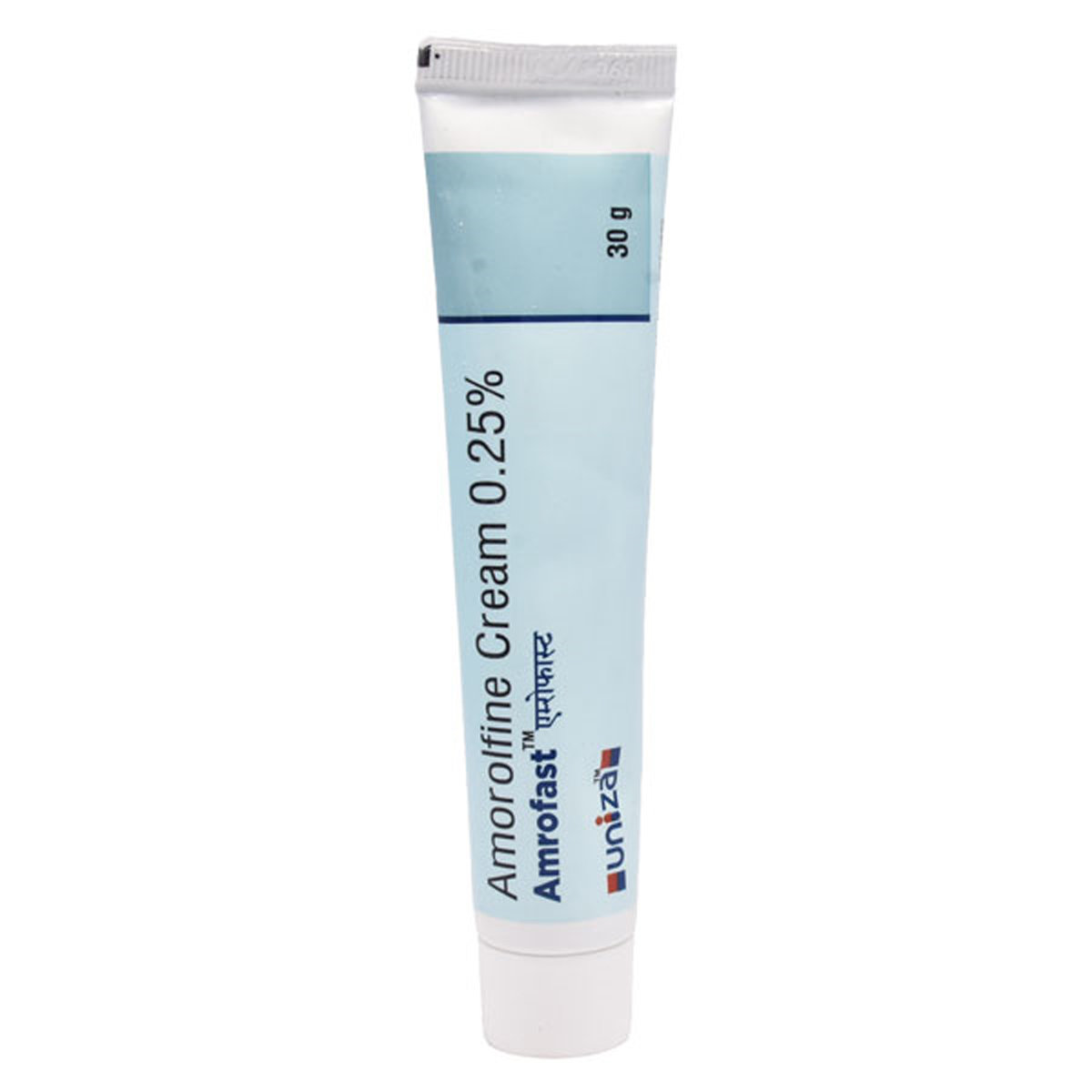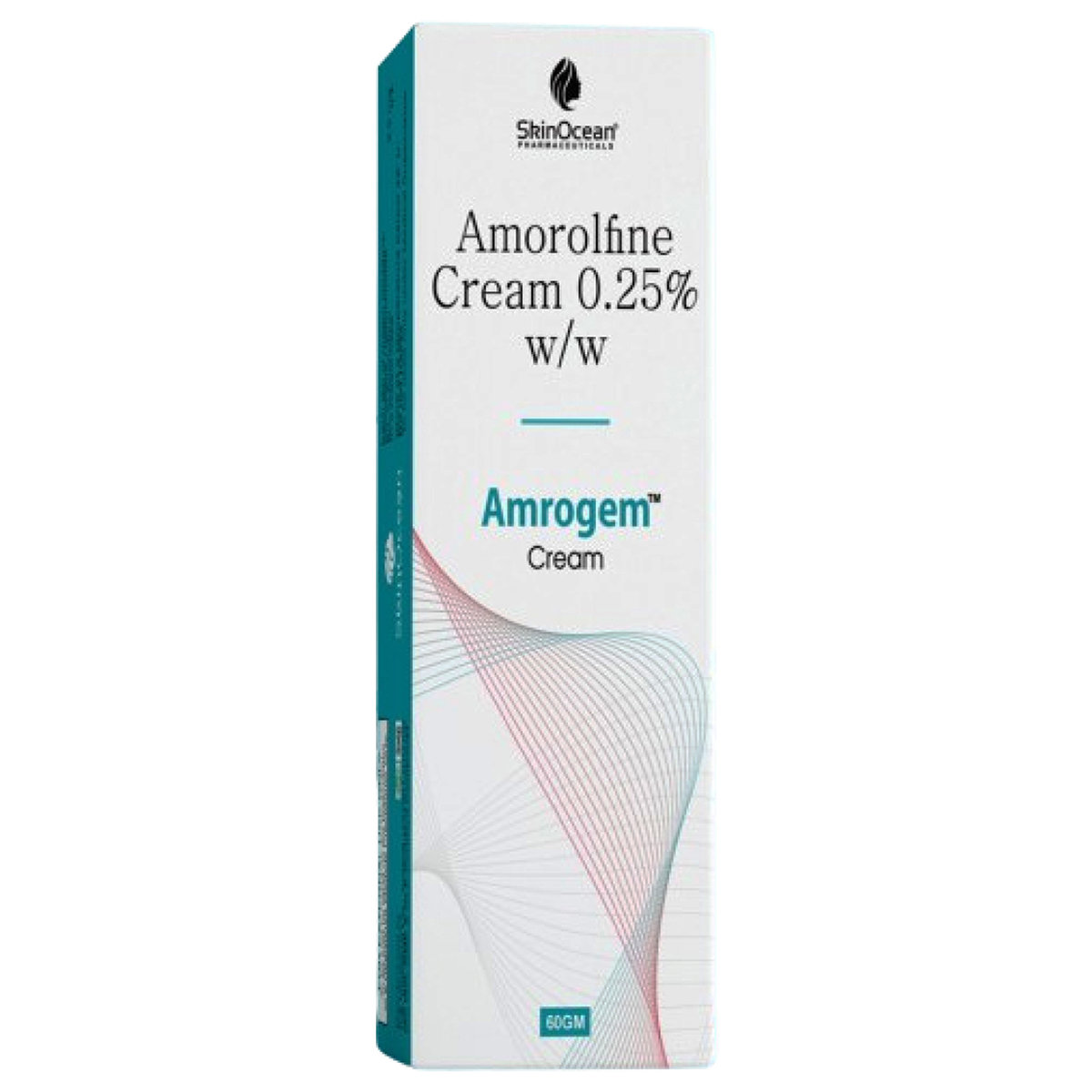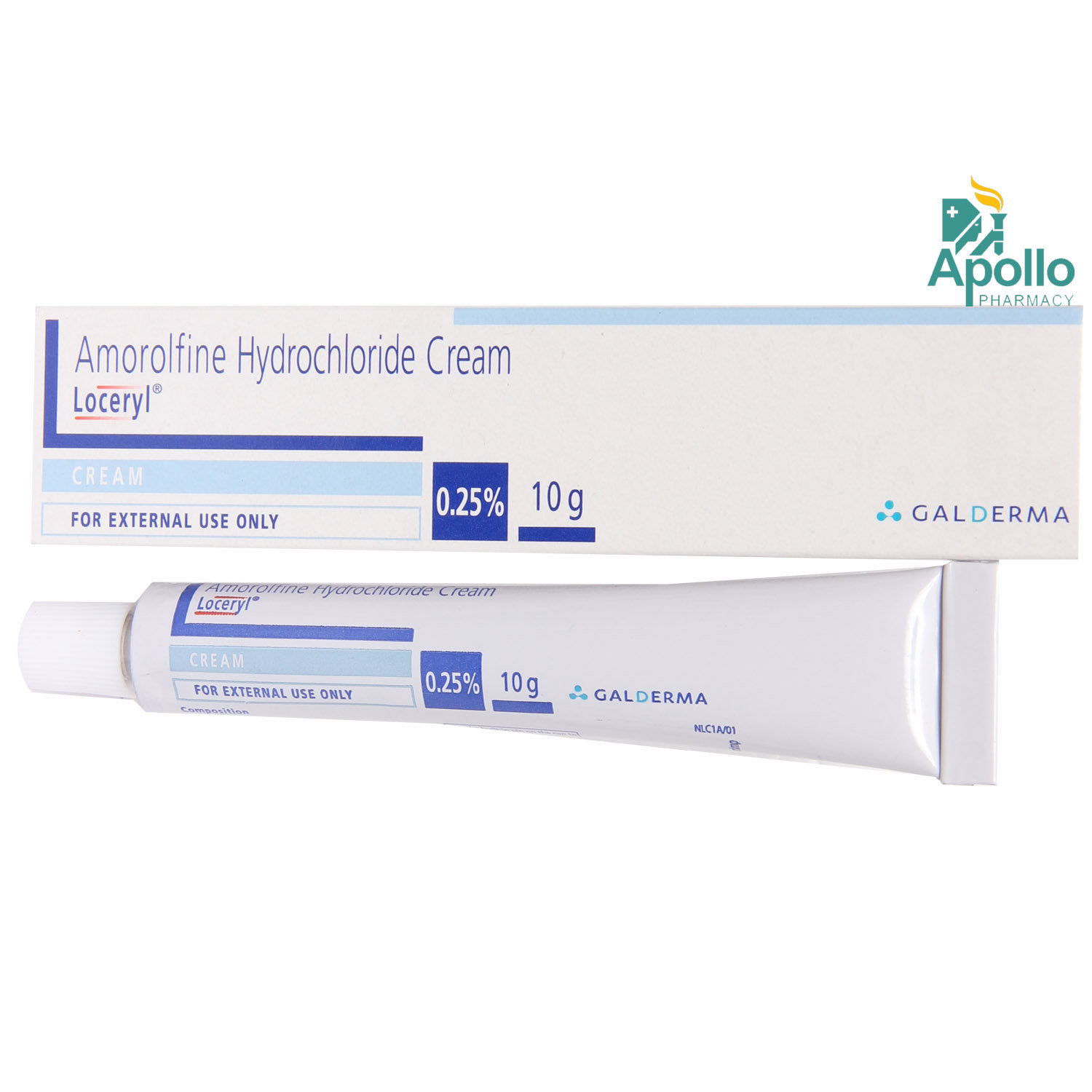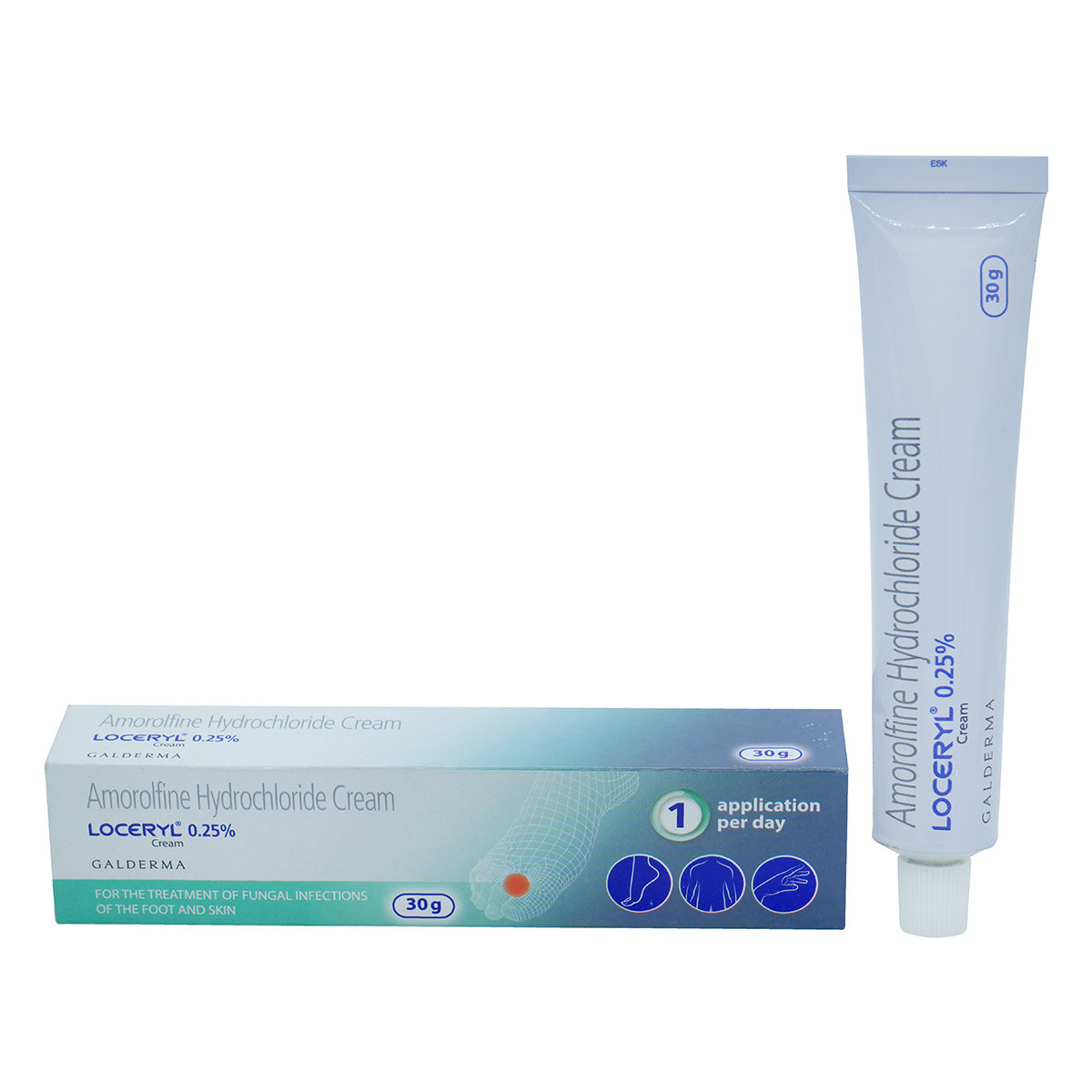Amorolfine
About Amorolfine
Amorolfine belongs to a class of drugs called 'antifungal' primarily used to treat fungal nail infections. Fungal infection occurs when a fungus invades and affects the tissue on the skin. Symptoms of a fungal infection include skin rash, irritation, redness, and scaling of the skin.
Amorolfine contains 'Amorolfine' that works by stopping producing a chemical called 'ergosterol' in fungi that causes nail infection. Without ergosterol, the fungus cannot survive. As a result, infection-causing fungi die.
Use Amorolfine as suggested by your doctor. Common side effects of Amorolfine may include dry skin, itching, redness, or burning sensation of the skin. Most of these side effects of Amorolfine do not require medical attention and typically resolve on their own over time. However, if the side effects persist or worsen, please consult your doctor.
If you are pregnant or breastfeeding, it is recommended to consult a doctor before using Amorolfine. If you use Amorolfine in topical form, avoid smoking or going near naked flames as Amorolfine catches fire and burns easily. If you are using any steroidal cream, lotion or ointment, inform your doctor before taking Amorolfine to adjust the dose.
Uses of Amorolfine
• Manages athlete’s foot (Tinea pedis): Amorolfine treats fungal infections between toes.
• Addresses cutaneous candidiasis: Amorolfine helps with yeast infections on the skin.
• Treats Pityriasis versicolor: Amorolfine reduces discoloured patches caused by fungal overgrowth.
Medicinal Benefits
Amorolfine is an antifungal that is primarily used to treat fungal infections of nails and skin such as ringworm, jock itch and athlete’s foot, seborrheic dermatitis (dry, flaky skin on face, scalp, chest, upper back, or ears) and pityriasis (a type of skin rash that causes scaly, discoloured patches on chest, back, legs and arms). The fungal cell membranes are essential for their survival, as they prevent unwanted substances from entering the cells and stop the leakage of cell contents. Amorolfine causes holes in the fungal cell membranes and kills fungi. Therefore, it clears fungal infections and provides relief from the symptoms of skin irritation, including cracking, burning, scaling, and itching, caused by these infections.
Directions for Use
- Follow your doctor's instructions on the dosage and timing of this medication to ensure safe and effective use.
- File the infected area of the nail. Then, gently clean the nail surface. Use the spatula to scoop some lacquer from the bottle. Apply the medicine evenly over the entire nail surface. Again, wash the spatula and keep it for reuse.
- For external use only. If Amorolfine comes into contact with the eyes, nose, or mouth, rinse with water immediately.
Storage
Side Effects of Amorolfine
- Itching
- Dry skin
- Redness
- Burning sensation of the skin
Drug Warnings
Before using Amorolfine, let your doctor know if you have a history of liver diseases, adrenal gland problems, cataracts, glaucoma, diabetes or allergic reactions to any medicine ingredient. Let your doctor know if you plan to become pregnant or already pregnant and a lactating mother. Studies show that there may be harmful effects on the baby; hence Amorolfine should be used with caution in pregnancy under your doctor's supervision. If you apply Amorolfine to breasts or nipple for treatment, wash it off while nursing your baby.
Amorolfine is for external use only, so avoid contact with the eyes, the mouth, or intravaginally. Notify the doctor if there is no improvement after one week of treatment for tinea cruris or tinea corporis or two weeks for tinea pedis. When using Amorolfine in the groin area, patients should use the medication for two weeks only. Prolonged use of Amorolfine may cause hormonal suppression, Cushing's syndrome, hyperglycemia (increased blood sugar level), and glucosuria (high sugar in urine) in some patients. Apply sunscreen (SPF 30 or higher) whenever you go outdoor in the sunlight.
Drug Interactions
Drug-Drug Interaction: Amorolfine may interact with respiratory-related medications (budesonide, formoterol), HIV/AIDS treatments (ritonavir, cobicistat), and corticosteroids.
Drug-Food Interaction: No drug-food interactions found/established.
Drug-Disease Interaction: Amorolfine should not be given in patients with a history of allergic reactions to clotrimazole and betamethasone, who have diabetes, liver diseases, cataracts, glaucoma, adrenal gland problems, and hormonal problems.
Drug-Drug Interactions Checker List:
Safety Advice

Alcohol
consult your doctorNo interactions were found. Please consult your doctor before using Amorolfine.

Pregnancy
consult your doctorAmorolfine is a Category C pregnancy drug and is given to a pregnant woman only if the doctor thinks the benefits outweigh the risks.

Breast Feeding
consult your doctorThere is limited data on how Amorolfine affects breastfeeding. Please consult your doctor before starting Amorolfine. However, if nursing mothers apply Amorolfine to their breasts for treatment, it is advised to wash the affected area thoroughly before breastfeeding the baby.

Driving
safe if prescribedAmorolfine does not influence on the ability to drive or use machines.

Liver
consult your doctorIf you have any concerns regarding the use of Amorolfine in patients with Liver problems, please consult a doctor.

Kidney
safe if prescribedAmorolfine is safe for patients with kidney disease if prescribed by a doctor.

Children
consult your doctorAmorolfine is to be used only on children below 12 years of age when prescribed by a doctor.
Habit Forming
Diet & Lifestyle Advise
- Avoid walking barefoot in places like gym showers to prevent fungal infections.
- Do not scratch the affected area of the skin, as this can spread the infection to other parts of the body.
- Avoid sharing towels, combs, bed sheets, shoes, or socks with others.
- Wash your bedsheets and towels regularly.
- Follow a candida diet if you suffer from vaginal yeast infection. Candida's diet excludes high sugary foods, some dairy products and foods with artificial preservatives.
- Avoid or limit the intake of alcohol and caffeine.
Special Advise
It is recommended to consult your doctor if the fungal infection symptoms persist or worsen after two weeks of treatment. Before applying Amorolfine, clean and dry the affected area. Avoid contact of Amorolfine with nose, mouth or eyes. If Amorolfine comes into contact with these areas accidentally, rinse thoroughly with water. Do not wash the treated areas for at least 3 hours after applying Amorolfine.
Patients Concern
Disease/Condition Glossary
Fungal infection is a skin disease in which a fungus attacks the tissue and causes infection. Fungal infections may be contagious (spread from one person to another). Ringworm is a common fungal infection of the skin or scalp that is contagious and causes a rash resembling a ring-shaped worm. Jock itch (also known as tinea cruris) is a fungal infection of the skin that causes an itchy, red rash in warm and moist areas of the body such as the groin, buttocks, and inner thighs.
Athlete’s foot (also known as tinea pedis) is a fungal infection that usually starts between the toes, especially in people who have excessively sweaty feet and wear tight-fitting shoes. It occurs most commonly in athletes. It causes itching, burning, or stinging sensations due to a scaly rash. Seborrheic dermatitis is a skin condition that causes an itchy rash with dry, flaky scales on the skin that contains oil glands, such as the scalp, face, back, and upper chest.
Fungal infection in nails happens when there is an overgrowth of fungi in, under, or on the nail. Fungal infections usually occur in toenails rather than fingernails, likely because toes remain under shoes, in a warm, moist environment.
FAQs
Amorolfine is used to treat fungal nail infections.
Amorolfine is safe to use with doctor's advice and over a limited period (1-2 weeks). Let your doctor know if your symptoms are not relieved by then or if you experience any side effects.
Amorolfine consists of Amorolfine that should be used after consulting with a doctor if a person has raised blood sugar levels (diabetes mellitus).
You are required to maintain a three-hour gap after applying Amorolfine if you are using more than one topical medication.
No, do not stop taking Amorolfine on your own, even if the symptoms are relieved, until your course, as advised by the doctor, is finished.
There is limited data on how Amorolfine affects breastfeeding. Please consult your doctor before starting Amorolfine. However, if nursing mothers apply Amorolfine to their breasts for treatment, it is advised to wash the affected area thoroughly before breastfeeding the baby.
Amorolfine contains Amorolfine, which works by stopping the production of a chemical called ergosterol in fungi that causes nail infection. Without ergosterol, the fungus cannot survive. As a result, infection-causing fungi die.
Amorolfine is for topical (for skin) use only. Do not put a bandage or dressing on the affected area while treating with Amorolfine unless the doctor advises. If the medicine gets into your eyes, nose, mouth or vagina, rinse with cold water. Do not apply Amorolfine on open wounds, lesions and blisters.
Amorolfine, when used for longer periods, can cause thinning and weakening of the skin. Please stop using Amorolfine and consult your doctor immediately if you experience these symptoms.
Yes, fungal infection is a contagious skin condition that spreads from one person to another through direct skin-to-skin contact, contact with contaminated soil or surfaces, or contact with infected animals. Therefore, it is recommended to avoid close direct contact until the infection is cleared and to avoid sharing items with the infected person, as this can also spread the infection.
You are recommended to apply makeup or sunscreen to the treated area of skin after a minimum of 20 minutes have passed since using Amorolfine.
You are recommended to use Amorolfine for as long as your doctor has prescribed it. However, if the condition worsens or persists after 2 to 4 weeks of treatment with Amorolfine, please consult a doctor.
You should use Amorolfine as prescribed. Your doctor will recommend the dose and duration based on the type of fungal infection. It is usually applied once a week to the affected finger or toenails. Sometimes, your doctor may ask you to use it twice a week.
No, Amorolfine is not a steroid. Amorolfine is an antifungal drug.
No, do not apply Amorolfine on other parts of the body like the oral cavity, eyes or intravaginally. It should only be restricted to nails and skin. Follow your doctor’s instructions carefully.
Yes, Amorolfine may cause allergic reactions in some people. Although, it is not very common and is likely to occur in only sensitive or susceptible people. If you experience such reactions, contact your doctor immediately.
Amorolfine should not be used in children unless advised by a doctor.
Amorolfine may cause skin redness as a common side effect. However, if the condition persists or worsens, consult your doctor.
Apply Amorolfine as a thin layer evenly on the entire surface of the dry skin or nail. Always wash your hands after applying Amorolfine. Avoid contact of Amorolfine with the eyes, ears, and mucous membranes.
Amorolfine may cause side effects such as itching, dry skin, redness, and a burning sensation in the skin. If these side effects persist or worsen, please consult your doctor.
Store Amorolfine at room temperature. Protect from light. Do not freeze. Keep it out of reach of children.
If you forget to use Amorolfine, apply it as soon as you remember. If you have concerns, discuss with your doctor.






